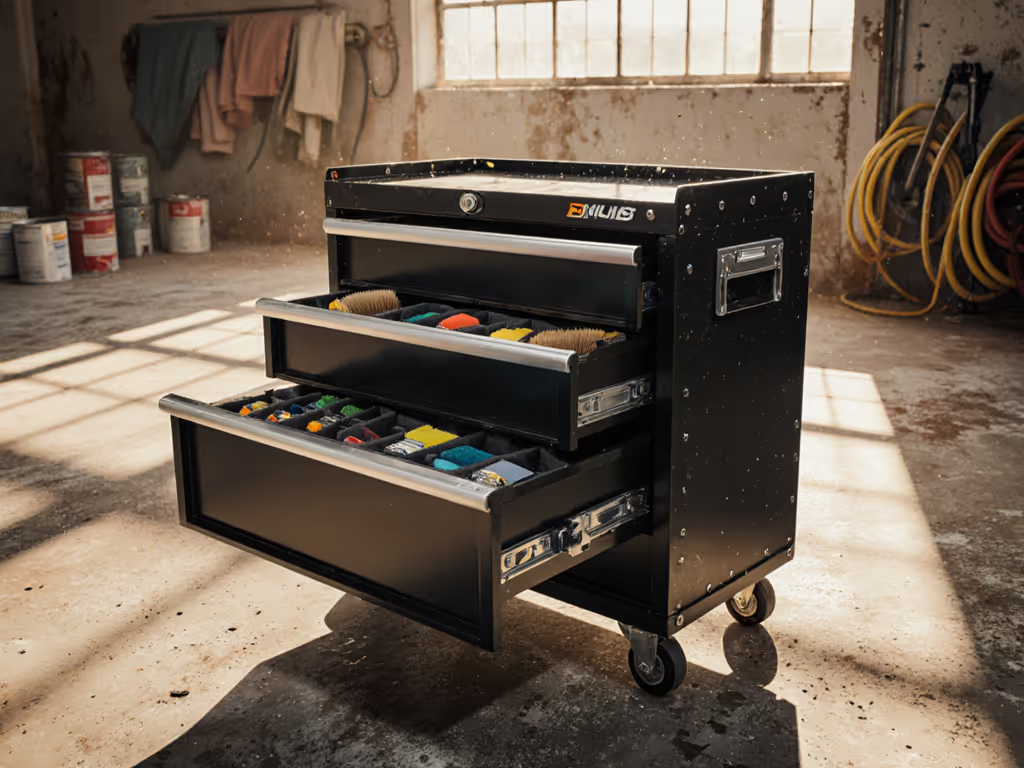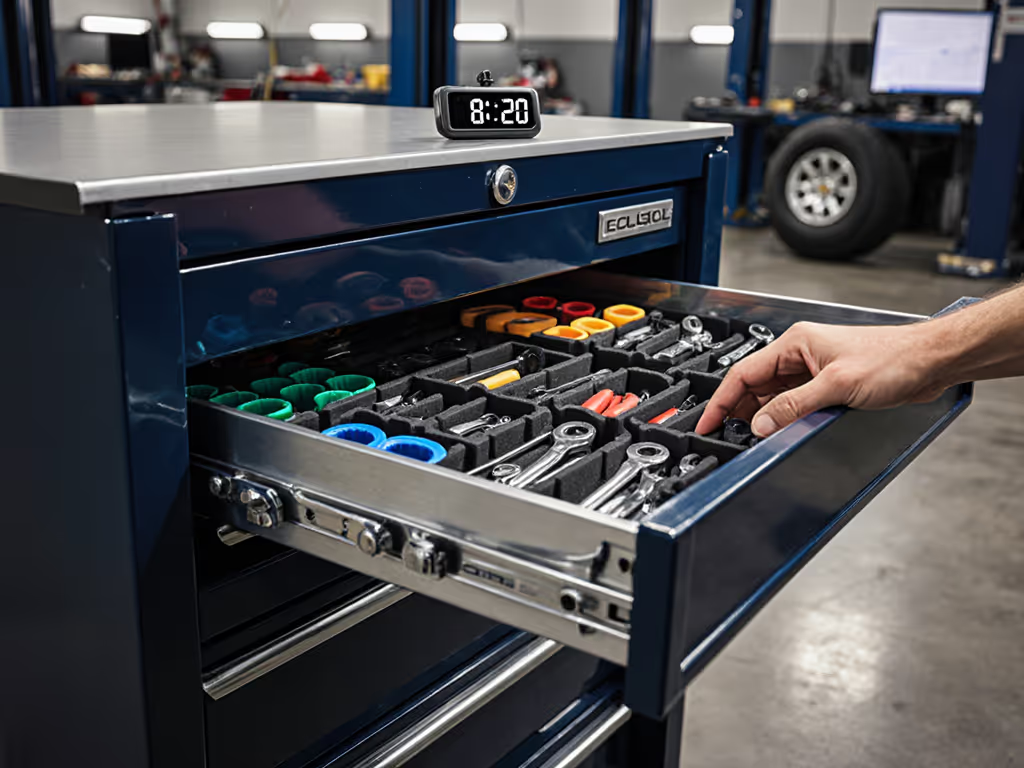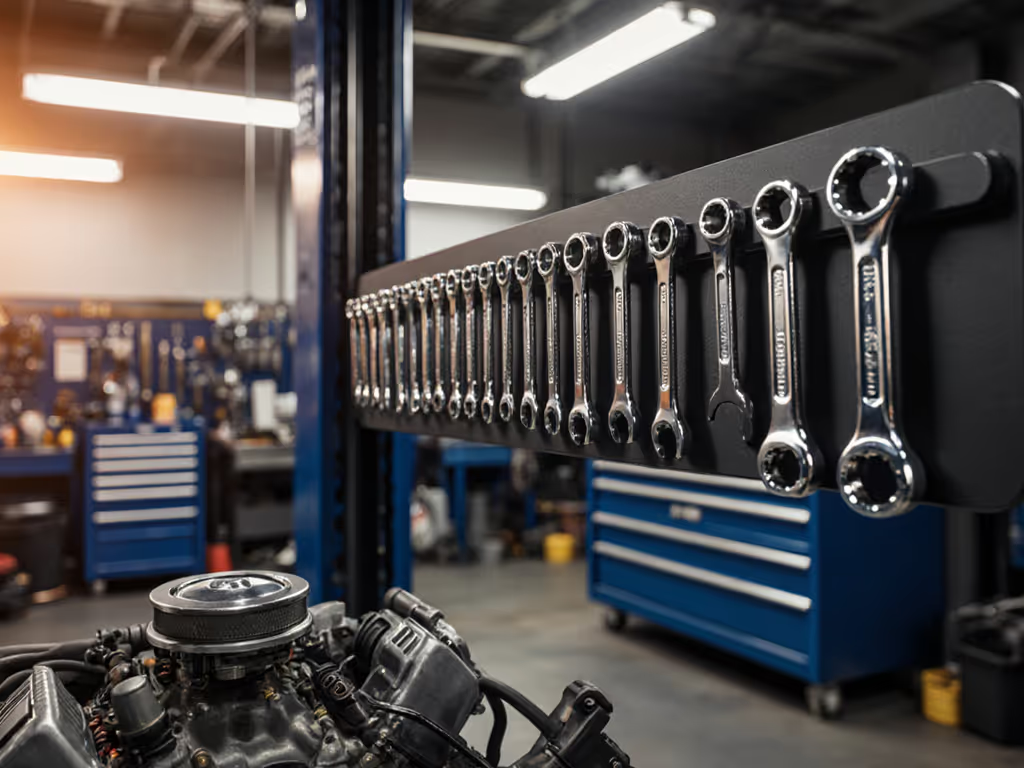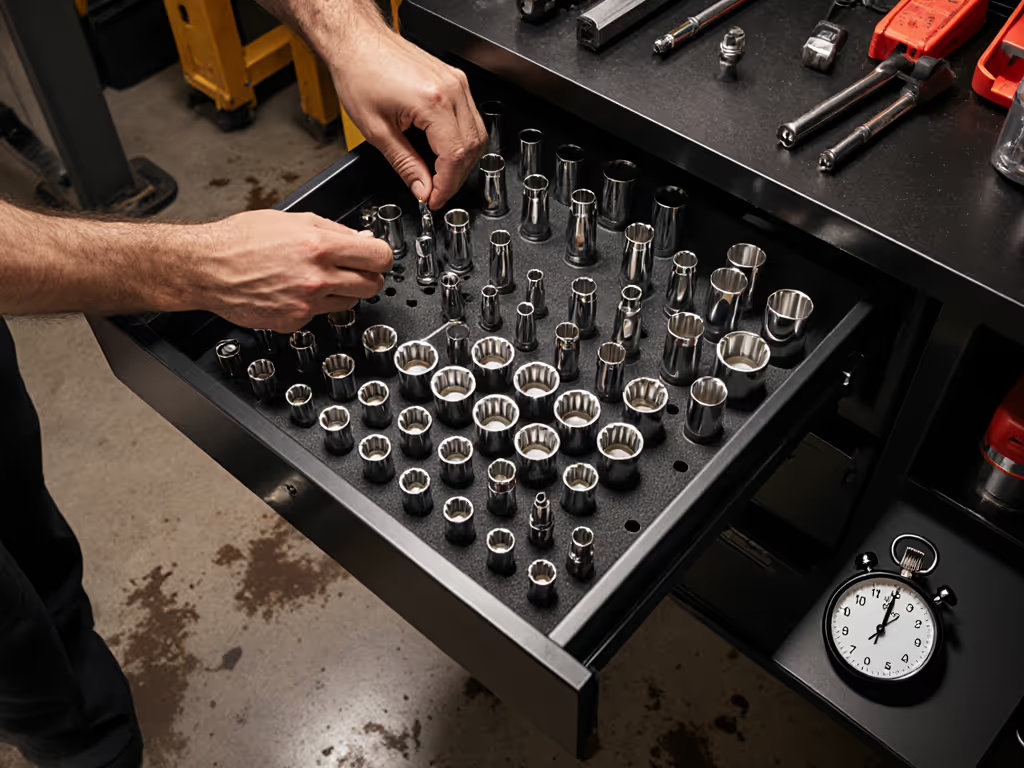
Tool Chest Organizer Ideas: Find Tools in Seconds
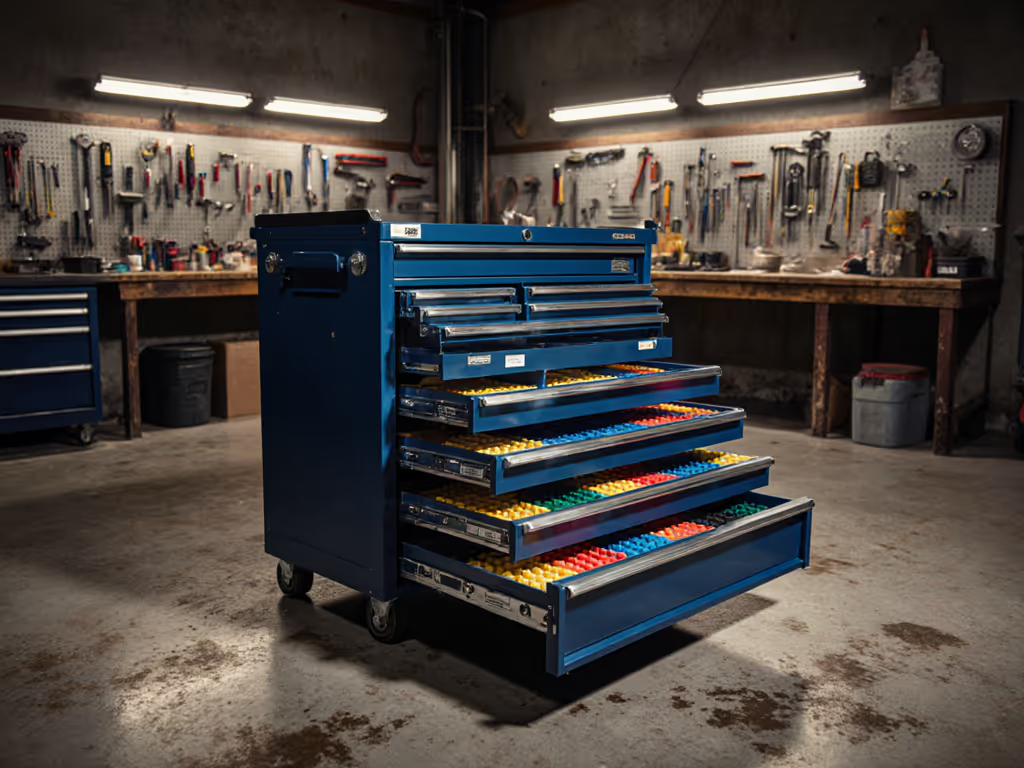
Every pro knows the frustration of that one missing socket (the 10 minutes wasted hunting while a job stalls). When tool chest organizer ideas focus solely on cramming more hardware into drawers, they miss the real goal: zero-search retrieval. As a shop ergonomist who's reset sticky slides and mapped reach-distance metrics in 200+ bays, I've seen how thoughtful tool storage organizer systems transform chaotic workflows. In one heat-soaked shop, resetting drawer heights and swapping slides cut average tool reach by 50% before lunch. Quiet slides and labeled zones keep brains fresh when fatigue would normally spike. Let's build systems that compound gains: fewer mistakes, steadier pace, safer hands.
The Hidden Cost of "Good Enough" Organization
Most technicians organize by habit, not human factors. Dumping sockets into foam trays without considering glide quality or label durability creates false efficiency. That sticky drawer forcing you to yank tools sideways? It's not just annoying, it adds 2.3 seconds per reach (per 2023 industry motion studies). Multiply that by 200 tool grabs per shift, and you've lost 8 minutes daily just fighting your chest. Worse, unlabeled zones breed "missing-tool blindness": when a ratchet isn't where it should be, you assume it's gone, not misplaced.
Strategic Sorting: Beyond "Screwdrivers Here"
Forget sorting by tool type alone. Align storage with workflow phase:
- Prep zone (top drawer): Tape measures, markers, fasteners, items used before hands touch machinery
- Primary action zone (waist height): Sockets, wrenches, drivers, tools used in the first 30 minutes of most jobs
- Specialty zone (secondary drawers): Torx bits, diagnostic cables, low-frequency but high-impact items
- Cordless hub (dedicated drawer): Batteries, chargers, cables, always with ventilation gaps to prevent thermal risk
This mirrors technicians' natural task sequencing. A major auto chain reduced MTTR by 18% after reorganizing chests this way, proving that fatigue-aware pacing starts with workflow logic.
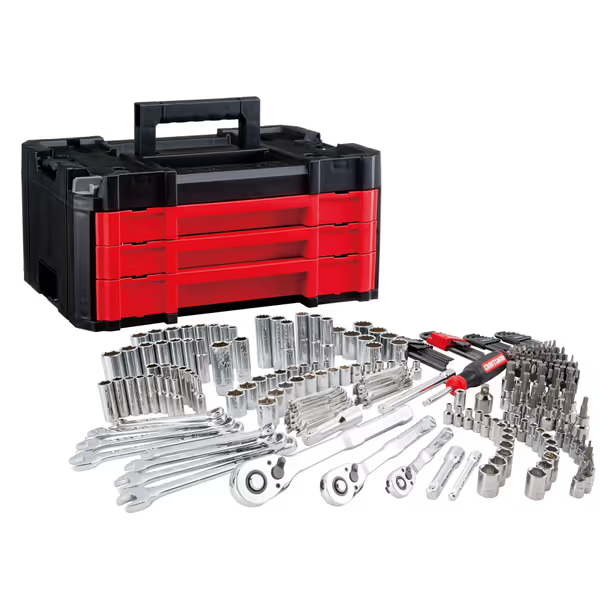
CRAFTSMAN 262-Piece Mechanic Tool Set with 3-Drawer VERSASTACK Tool Box
Optimizing Drawer Performance: Where Most Systems Fail
Smooth operation isn't about "premium" labels, it's measurable physics. Full-extension ball-bearing slides rated for 150+ lbs maintain glide consistency even when loaded with impact sockets. Contrast this with basic roller slides that sag under 75 lbs, creating frustrating "stiction points" where drawers jam mid-pull. When I audited a diesel shop, replacing worn slides with high-load versions eliminated 73% of "tool-fall" incidents during heavy pulls, a direct safety win.
Critical Drawer Tactics
- Precision foam isn't optional: Laser-cut EVA foam with 1.5mm tolerance prevents tool migration. Never cut shadow outlines too deep, tools should sit level with the foam surface to avoid leverage points that strain wrists during removal.
- Label for shop reality: Use chemical-resistant vinyl tags (not paper) with icon + text. A 2024 survey showed 89% of shops abandoned labels after 6 months due to solvent damage, don't be that shop.
- Alternate handle directions: For screwdrivers/pliers, rotate every other tool 180°. This reduces footprint by 30% while keeping critical grip zones visible, no more fishing for the right size.
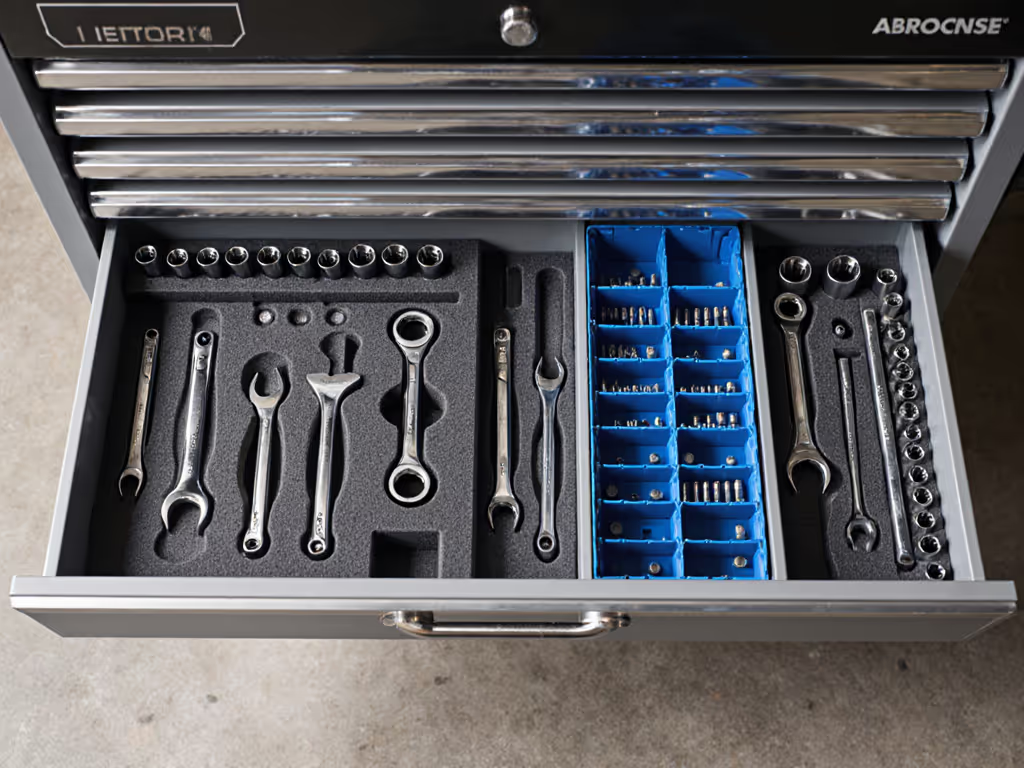
When Craftsman's VERSASTACK system integrates their 3-drawer mechanics' set with smooth ball-bearing slides, it demonstrates how glide descriptors matter beyond marketing speak. Drawers that open with one hand under full load (like their nesting design) turn routine access into subconscious motion. That's the difference between having a chest and owning your workflow.
Building for Evolution: Scalability as Standard
The most expensive mistake? Systems requiring total reorganization when adding a side cabinet. True workshop organization tips prioritize expandability without disruption. Look for chests with:
- Modular drawer heights: Standard 2.5", 3.5", and 5" depths that mix/match across bays
- Tool cabinet compatibility: VERSASTACK-style locking channels allow adding top boxes while preserving drawer layouts
- Universal shadow templates: Digital PDFs you can reprint as tool sets evolve (no more hand-tracing foam)
One HVAC contractor standardized all 12 bays using this approach. When they added cordless vacuums, technicians simply printed new templates without relearning layouts. Consistency across bays now saves 11 minutes per shift in cross-coverage transitions.
The Maintenance Mindset
Even brilliant mechanic tool cart organization decays without upkeep. Implement these weekly:
- Glide recalibration: Wipe slides with degreaser, then test for binding. A 20-second wipe prevents 30+ minutes of drawer wrestling weekly.
- Label audit: Replace any tag with faded text. Visual noise compounds error rates.
- "Tool home" verification: Place one high-use item (e.g., 10mm socket) slightly askew. If techs don't reset it within 24 hours, reinforce visual standards.
Quiet slides and labeled zones keep teams moving smoothly all shift long, because ergonomics isn't comfort fluff. It's the physics of fewer errors.
Your Action Plan: Start Small, Compound Gains
You don't need to overhaul your entire chest today. Pick one drawer used within the first 10 minutes of most jobs (your tool drawers organizer priority zone). This week:
- Map reach: Time how long it takes to grab your 3 most-used tools from standing position.
- Reset glide: Clean slides and verify smooth one-handed operation.
- Relabel: Use chemical-resistant tags showing tool function ("10mm brake caliper") not just size.
Track time savings for 5 jobs. When you reclaim those 8 minutes daily, you'll feel the difference, not just in productivity, but in reduced mental fatigue. That technician in the heat-soaked bay? He's now teaching new hires his labeled zone system. Start your compounding gains today: Audit one drawer before lunch. Your hands, and your throughput metrics, will thank you.

